Deserts aren’t empty—they’re alive with secrets.
While the heat scorches the ground and the cacti cast long, sharp shadows, a wild cast of creatures thrives in the dust.
Some crawl. Some slither.
And Saguaro National Park?
It’s their stage.
Home to animals that survive against the odds,
with clever tricks, built-in armor, and just enough sass to stay alive.
From cactus-dwelling owls to lizards that vanish into thin air,
this park is packed with personalities—some adorable, some fierce, all unforgettable.
So grab your water bottle, keep your eyes peeled, and step into a place where the sun blazes,
and the wildlife does anything but lie low.
Gila Monster

The Gila Monster, with its striking orange and black markings, is one of the few venomous lizards in the world. Its slow-moving nature belies its potent bite. Found in the rocky outcrops of Saguaro National Park, this reptile is a master of survival. It spends most of its life underground, emerging to feed primarily on eggs and small mammals. Interestingly, the Gila Monster can consume large meals and store fat in its tail, allowing it to go months without eating. It is a protected species, making sightings a rare and cherished experience.
Cactus Wren
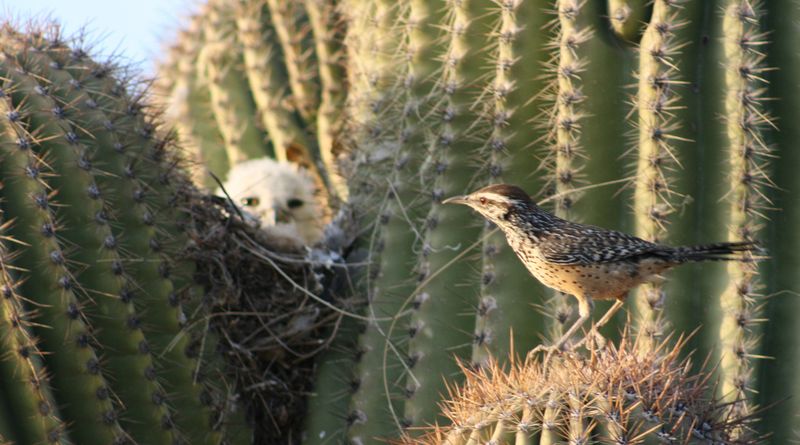
Known for its distinctive call, the Cactus Wren is the largest wren in the United States. Its spotted brown and white plumage blends seamlessly with the desert landscape. These birds are industrious nest builders, often using thorny cacti to protect their homes from predators. The Cactus Wren is a common sight in Saguaro National Park, darting swiftly between cacti and shrubs. They feed on insects and fruit, playing a significant role in seed dispersal. Their curious nature and lively antics make them a delightful presence in the arid environment.
Javelina

The Javelina, or collared peccary, resembles a wild pig but is a distinct species. These social animals travel in herds, foraging for roots, fruits, and seeds. In Saguaro National Park, they are often seen scouring the desert floor. Despite their bristly appearance, Javelinas are shy and reclusive. They have a keen sense of smell, crucial for finding food in the sparse desert environment. A unique scent gland on their back helps them identify each other, a vital adaptation for maintaining group cohesion in the wild.
Greater Roadrunner
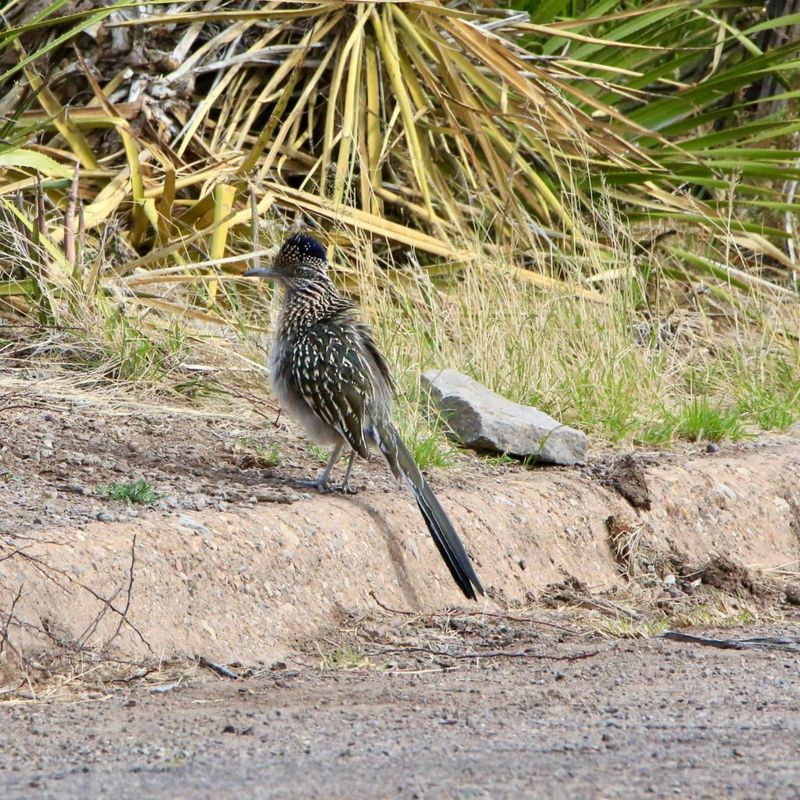
Famed for its speed, the Greater Roadrunner is a symbol of desert agility. Capable of running at speeds up to 20 miles per hour, it chases down prey such as lizards and insects. In Saguaro National Park, this bird is often spotted dashing across the sandy expanses. Despite its comedic portrayal in cartoons, the roadrunner is a formidable hunter. It has adapted to the desert heat by reducing its activity during the hottest parts of the day. Its distinctive crest and long tail make it easily recognizable against the desert backdrop.
Desert Tortoise
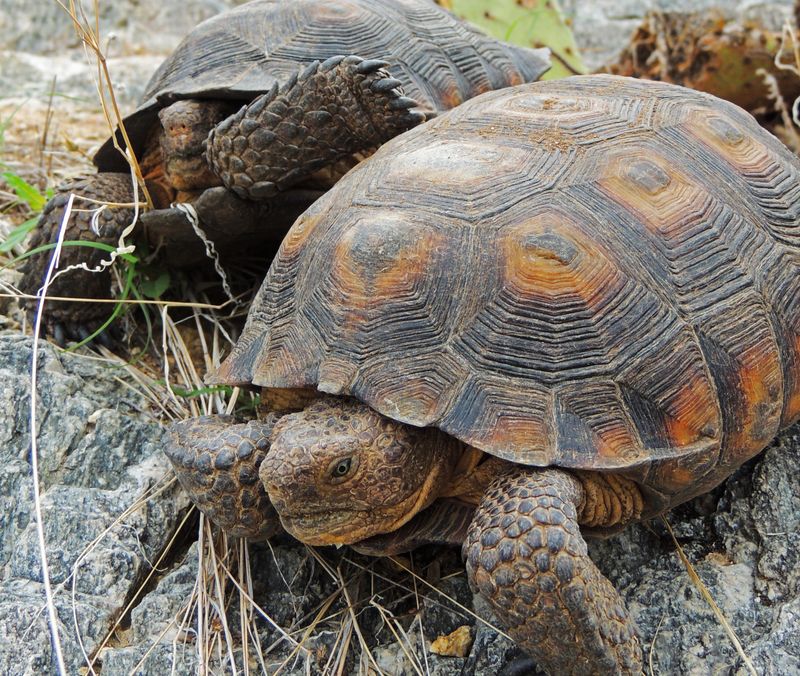
The Desert Tortoise embodies resilience in the harsh desert climate. With a lifespan of up to 80 years, it spends much of its life in burrows to escape the blistering heat. This slow-moving herbivore feeds on grasses, flowers, and cacti, contributing to the desert’s delicate balance. In Saguaro National Park, the tortoise is a symbol of patience and survival. Its thick shell provides protection from predators, while its ability to conserve water is key to its endurance. Observing this tortoise in its natural habitat is a testament to nature’s ingenuity.
Bighorn Sheep
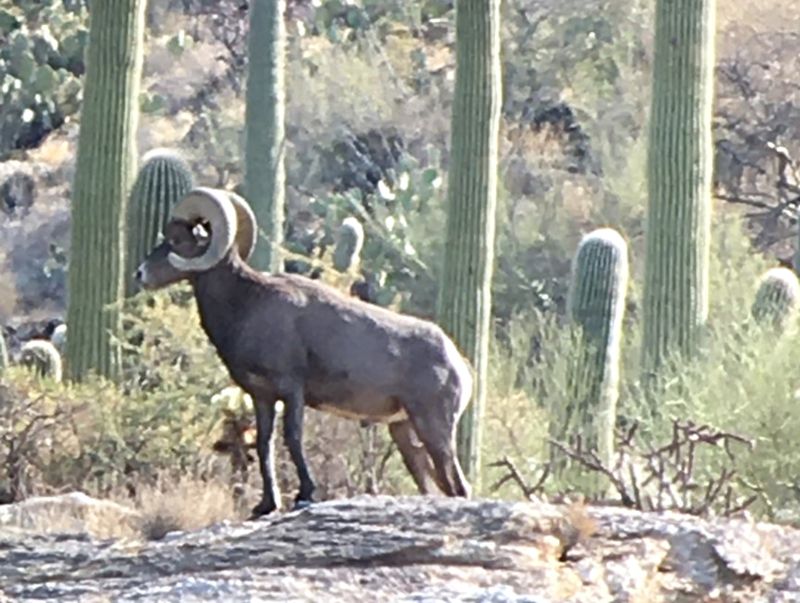
Bighorn Sheep are masters of the mountainous terrain found in parts of Saguaro National Park. Their sure-footed agility allows them to traverse steep, rocky landscapes with ease. These majestic animals are characterized by their impressive curved horns, which are used in battles for dominance. Bighorn Sheep live in social groups, and their diet consists mainly of grasses and shrubs. They have adapted to the desert’s scarce water supply by obtaining moisture from their food. Spotting these sheep among the cliffs is a highlight for many park visitors.
Sonoran Desert Toad

The Sonoran Desert Toad, also known as the Colorado River Toad, is a nocturnal creature found near water sources in Saguaro National Park. Its smooth, olive-green skin helps camouflage it against predators. This toad is known for its potent toxins, which can be harmful if ingested. It emerges during the rainy season to breed, filling the desert nights with its distinctive calls. The toad’s ability to absorb water through its skin is crucial for survival in the arid environment. Observing them requires patience, as they are elusive and predominantly active at night.
Harris’s Hawk
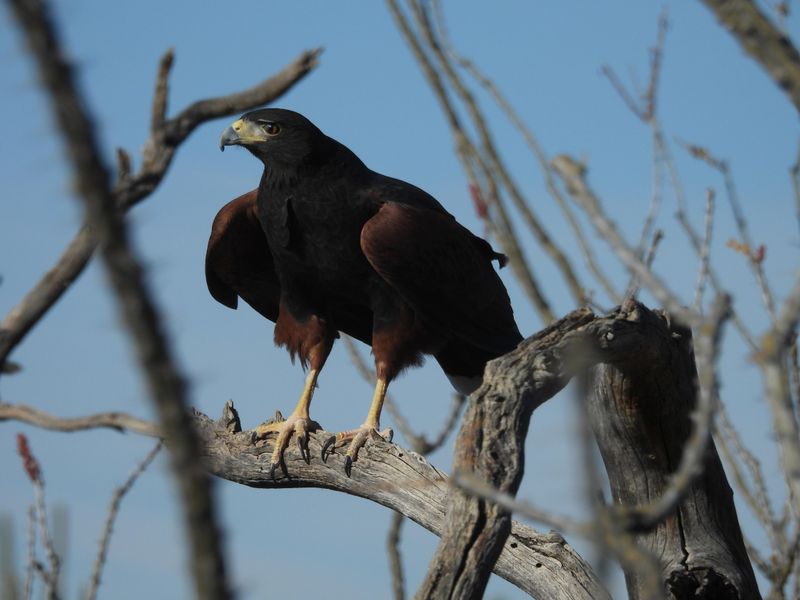
Harris’s Hawk is unique among birds of prey due to its social hunting behavior. These hawks are often seen hunting in cooperative groups, a strategy that increases their success in capturing prey. In Saguaro National Park, they perch on cacti and desert trees, scanning the ground for rodents and reptiles. Their striking dark plumage, accented with chestnut shoulders, makes them a sight to behold against the desert sky. Harris’s Hawks are known for their intelligence and adaptability, thriving in the challenging conditions of the Sonoran Desert.
Western Diamondback Rattlesnake

The Western Diamondback Rattlesnake is a symbol of the desert’s untamed beauty. This venomous snake, with its distinctive diamond pattern and warning rattle, commands respect. In Saguaro National Park, it inhabits rocky and brushy areas, where it hunts small mammals and birds. The rattlesnake relies on its heat-sensing pits to locate prey, a remarkable adaptation to the desert environment. Despite their fearsome reputation, these snakes prefer to avoid confrontation. Their presence is a reminder of the delicate balance of predator and prey in this harsh landscape.
Coues White-tailed Deer

The Coues White-tailed Deer, a smaller cousin of the more common white-tailed deer, is perfectly adapted to the desert landscape. Its keen senses and agile movements allow it to navigate the rugged terrain of Saguaro National Park. These deer are primarily browsers, feeding on a variety of vegetation, including shrubs and cacti. Their ability to find water in sparse environments is remarkable. The Coues Deer is often seen in the early morning or late evening, when temperatures are cooler. Its presence adds a touch of elegance to the desert wilderness.
Elf Owl
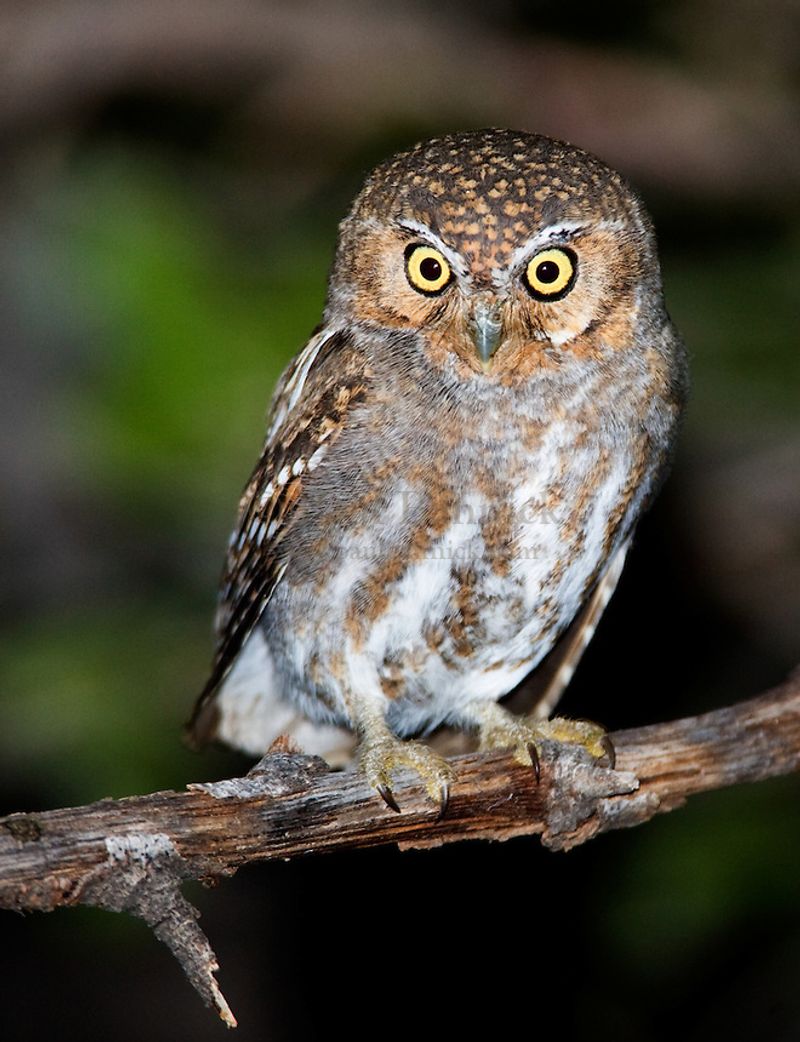
The Elf Owl, the world’s smallest owl, finds its home in the cavities of saguaro cacti. Weighing less than an ounce, its diminutive size is deceptive; this owl is a fierce predator of insects and small vertebrates. In Saguaro National Park, the Elf Owl is most active at night, its soft hoots echoing through the desert air. These owls are migratory, arriving in the park during the spring to breed. Their reliance on the iconic saguaro cactus for nesting highlights the intricate dependencies within the desert ecosystem.
Kangaroo Rat
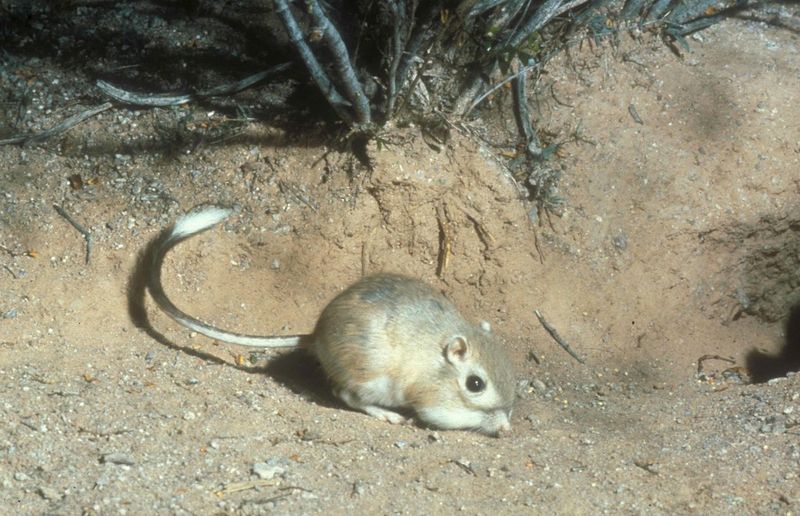
With its long hind legs and tufted tail, the Kangaroo Rat is a desert marvel. This small rodent is named for its hopping gait, reminiscent of a kangaroo’s. In Saguaro National Park, it thrives by foraging for seeds, which make up the bulk of its diet. Remarkably, the Kangaroo Rat can live without drinking water, obtaining moisture solely from its food. It is nocturnal, avoiding the desert heat by being active at night. Its large eyes and ears are adaptations for its night-time lifestyle, making it well-suited to the desert’s challenges.
Black-tailed Jackrabbit
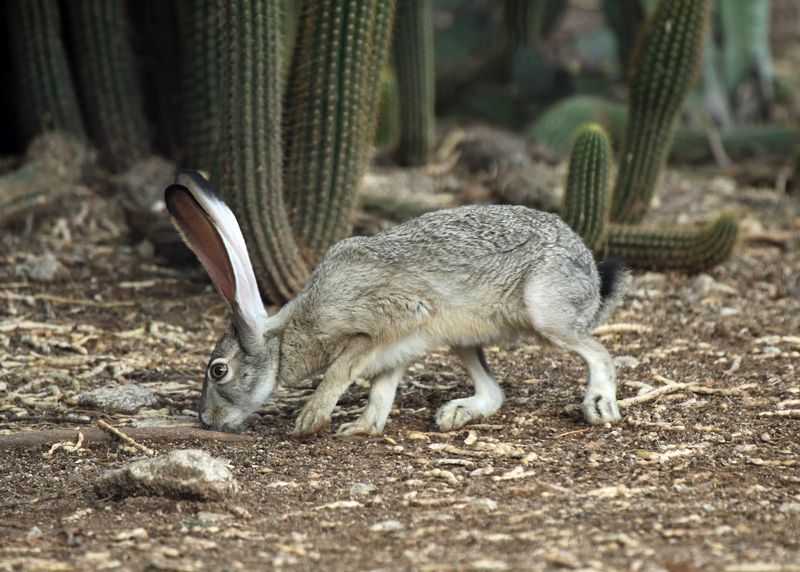
The Black-tailed Jackrabbit is an icon of desert agility and endurance. Its long ears help dissipate heat, a vital adaptation for surviving the scorching temperatures of Saguaro National Park. Known for their powerful hind legs, these hares can sprint at high speeds, evading predators with ease. They primarily feed on grasses and shrubs, and their keen senses keep them alert to danger. The jackrabbit’s ability to adapt to the harsh desert environment is a testament to nature’s resilience. Observing one in action is a thrilling experience for park visitors.
Desert Cottontail

The Desert Cottontail is a common yet charming resident of Saguaro National Park. With its soft grey fur and distinctive white tail, it is a familiar sight in the desert scrub. These rabbits are most active during the cooler parts of the day, foraging for grasses and herbs. Their large ears help regulate body temperature, an essential adaptation in the desert heat. The cottontail’s keen sense of hearing keeps it alert to predators. Despite the harsh conditions, these rabbits thrive, contributing to the diverse tapestry of desert life.
Verdin
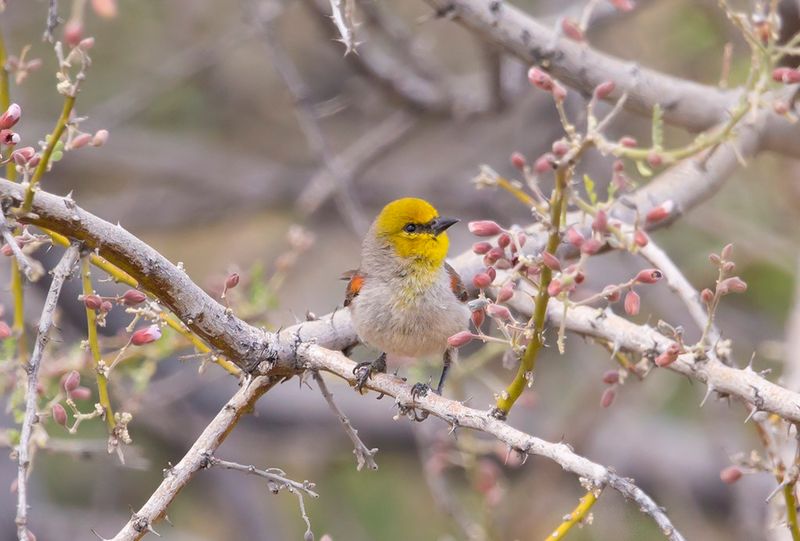
The Verdin, a small songbird, is a master builder in the desert. Known for constructing spherical nests, this bird uses twigs and spider webs to create a safe haven in the thorny bushes of Saguaro National Park. Its yellow head and grey body are distinctive markers in the arid landscape. Verdins feed on insects and nectar, playing a role in pollination. Their adaptability and resourcefulness are key to their survival in the desert’s challenging conditions. Watching a Verdin at work is a testament to the ingenuity of desert wildlife.
Cactus Ferruginous Pygmy Owl
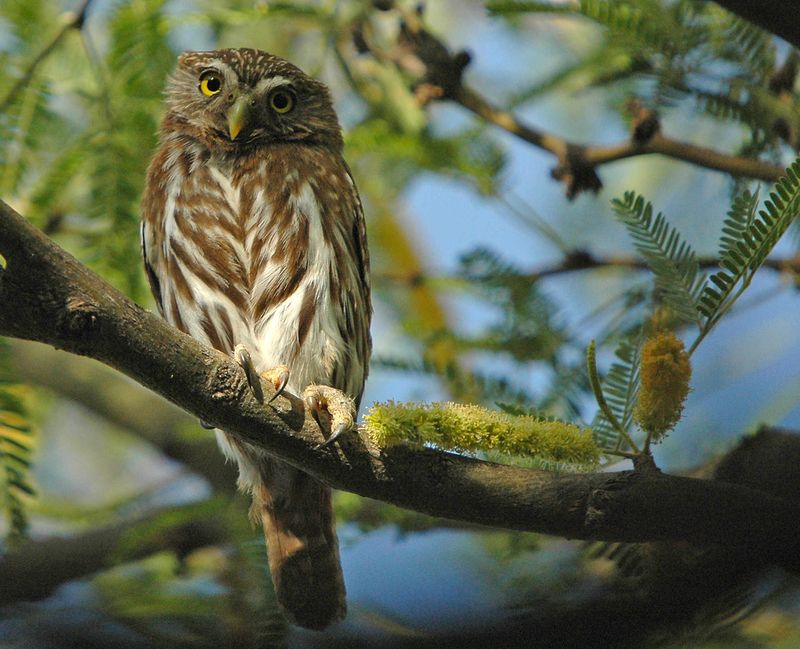
The Cactus Ferruginous Pygmy Owl, with its piercing yellow eyes and compact size, is a rare sight in Saguaro National Park. This owl is an adept hunter, preying on insects, small birds, and mammals. It nests in the cavities of cacti, blending seamlessly into its environment. Despite its small size, the pygmy owl is known for its fearless nature, often taking on prey larger than itself. Its presence in the park highlights the delicate balance of predator and prey in the desert ecosystem. Spotting one is a memorable experience for birdwatchers.
Gilded Flicker
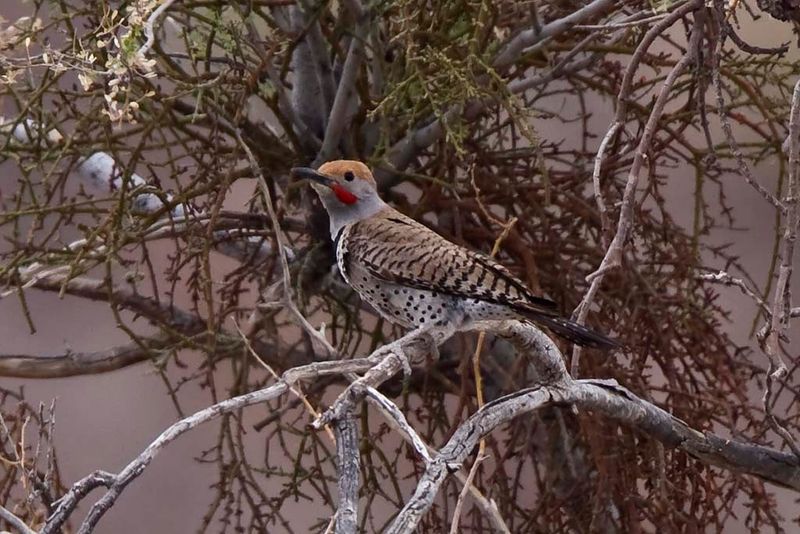
The Gilded Flicker is a striking woodpecker of the Sonoran Desert. Its golden-yellow plumage and distinctive call make it a standout among the desert’s avian residents. In Saguaro National Park, it is often seen clinging to cacti, searching for insects beneath the bark. This bird’s ability to excavate holes in cacti provides nesting sites for itself and other species. The Gilded Flicker’s role as both predator and provider underscores the interconnectedness of desert life. Its vibrant presence adds a splash of color to the arid landscape.
Giant Desert Centipede
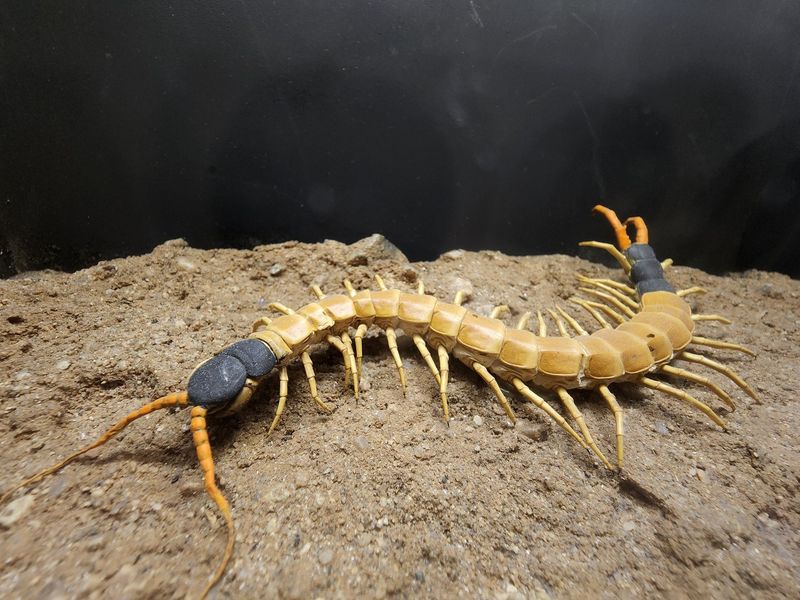
The Giant Desert Centipede is a formidable invertebrate of Saguaro National Park. With its elongated body and numerous legs, it is both fascinating and intimidating. This centipede is a nocturnal predator, hunting insects and small vertebrates under the cover of darkness. Its venomous bite is used to subdue prey quickly. Despite its fearsome appearance, the centipede plays a crucial role in controlling pest populations. Observing one in its natural habitat reveals the intricate web of life that thrives in the desert, where every creature has a role to play.
Pallid Bat

The Pallid Bat is a night-time acrobat of the desert skies. Known for its large ears and pale fur, this bat is adept at catching insects and arachnids. In Saguaro National Park, it emerges at dusk, using echolocation to navigate and hunt. This bat is known to feed on scorpions, showcasing its prowess as a predator. Its ability to thrive in the desert is a testament to its adaptability. The Pallid Bat’s nocturnal lifestyle and unique adaptations highlight the mysterious and often unseen aspects of desert wildlife.
Desert Iguana
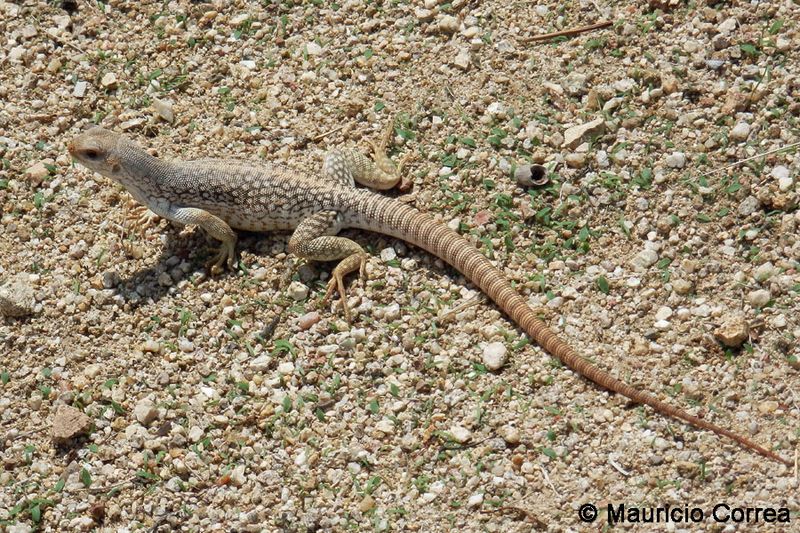
The Desert Iguana, a master of camouflage, thrives in the arid landscapes of Saguaro National Park. Known for its pale skin and long tail, this reptile blends seamlessly with the sandy terrain.
Active during the day, these lizards can often be seen basking on rocks to absorb the sun’s warmth. Despite the harsh conditions of their environment, they maintain a graceful and agile demeanor.
An interesting fact about the Desert Iguana is its ability to tolerate higher temperatures than most lizards, a testament to its remarkable adaptability. This reptile embodies the resilient spirit of desert wildlife.

